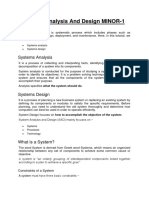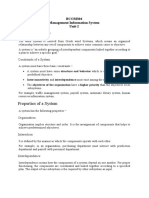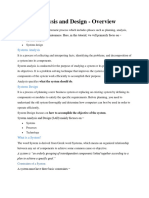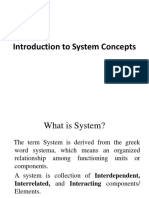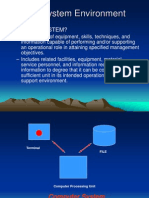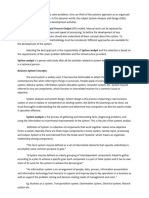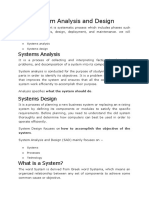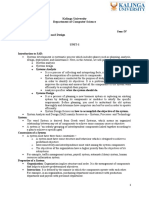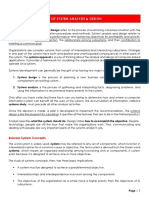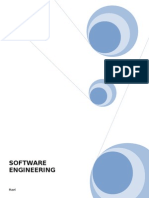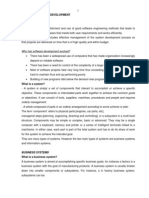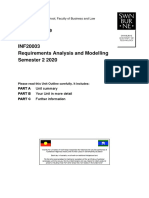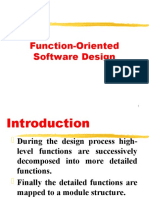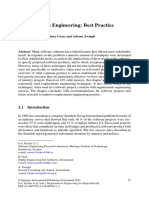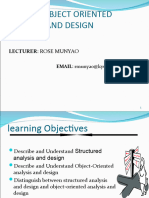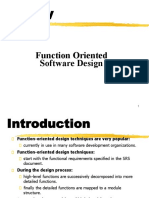0% found this document useful (0 votes)
30 views8 pagesSystems Analysis and Design Notes
The document provides an overview of systems analysis and design, defining key concepts such as systems, components, and characteristics. It outlines the System Development Life Cycle (SDLC) stages, the importance of user involvement, and the roles of analysts, emphasizing the need for both technical and interpersonal skills. Additionally, it discusses various information-gathering techniques and structured analysis tools to effectively develop and implement systems.
Uploaded by
shakilasharintonimaCopyright
© © All Rights Reserved
We take content rights seriously. If you suspect this is your content, claim it here.
Available Formats
Download as PDF, TXT or read online on Scribd
0% found this document useful (0 votes)
30 views8 pagesSystems Analysis and Design Notes
The document provides an overview of systems analysis and design, defining key concepts such as systems, components, and characteristics. It outlines the System Development Life Cycle (SDLC) stages, the importance of user involvement, and the roles of analysts, emphasizing the need for both technical and interpersonal skills. Additionally, it discusses various information-gathering techniques and structured analysis tools to effectively develop and implement systems.
Uploaded by
shakilasharintonimaCopyright
© © All Rights Reserved
We take content rights seriously. If you suspect this is your content, claim it here.
Available Formats
Download as PDF, TXT or read online on Scribd
/ 8
















